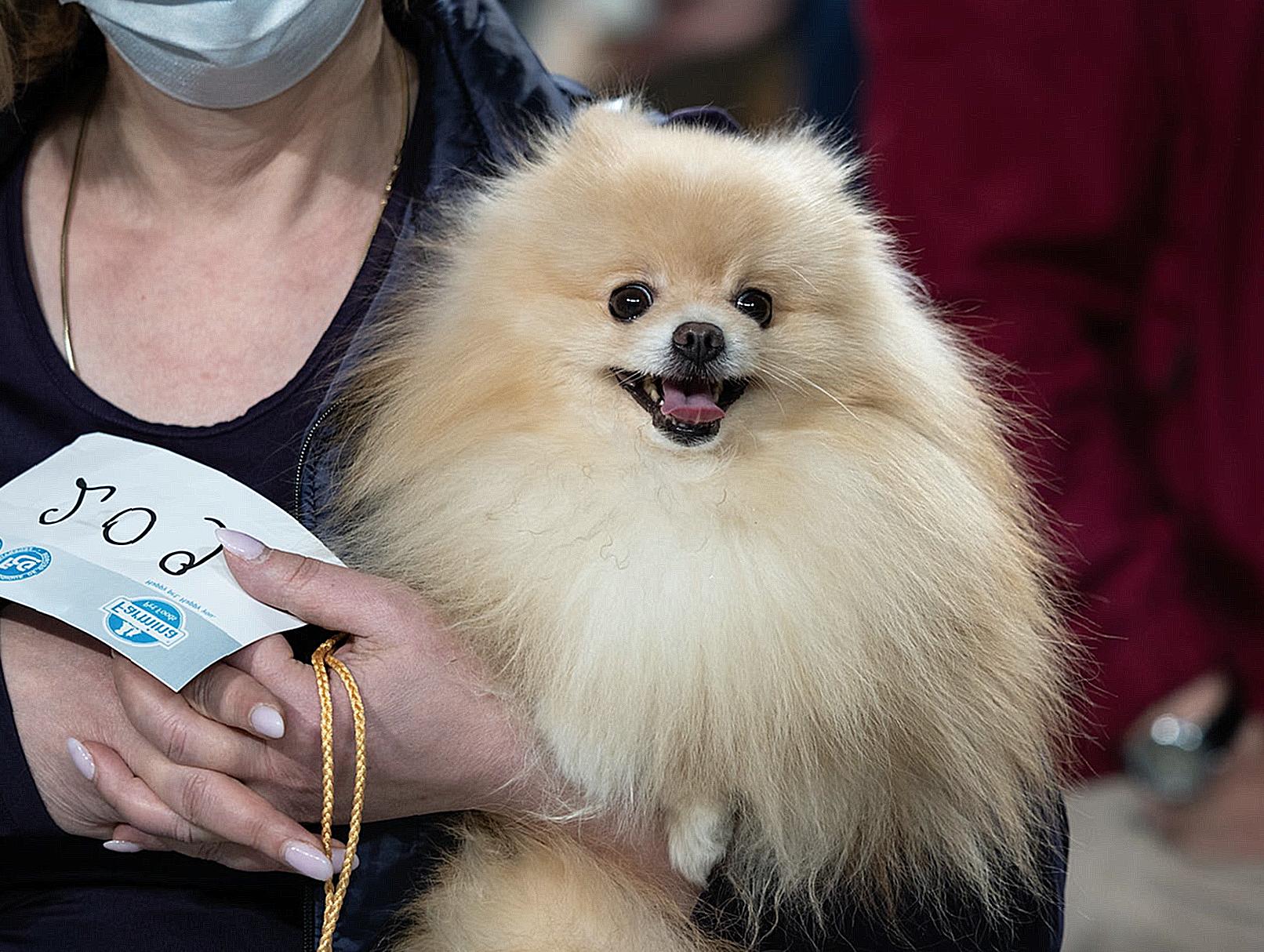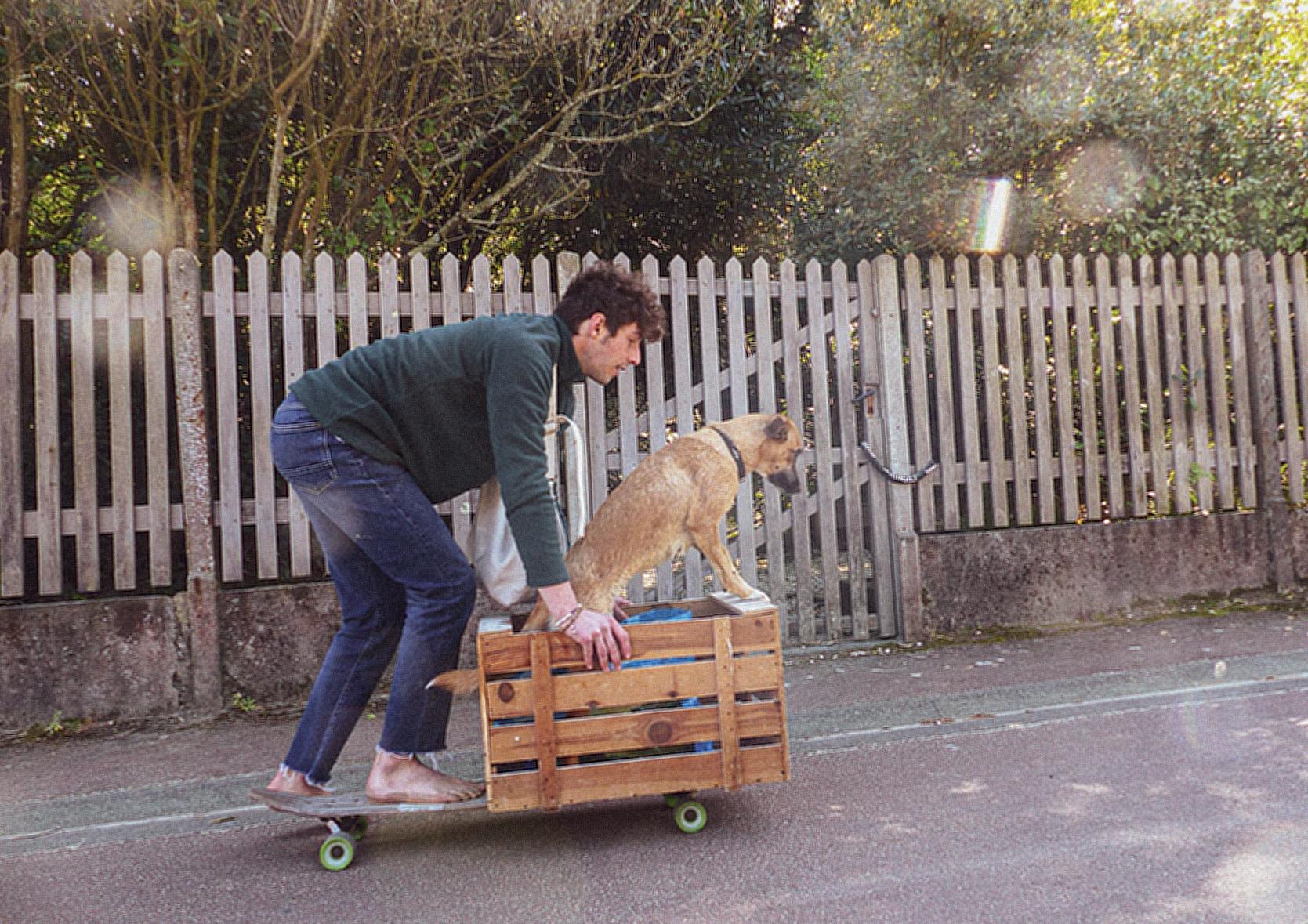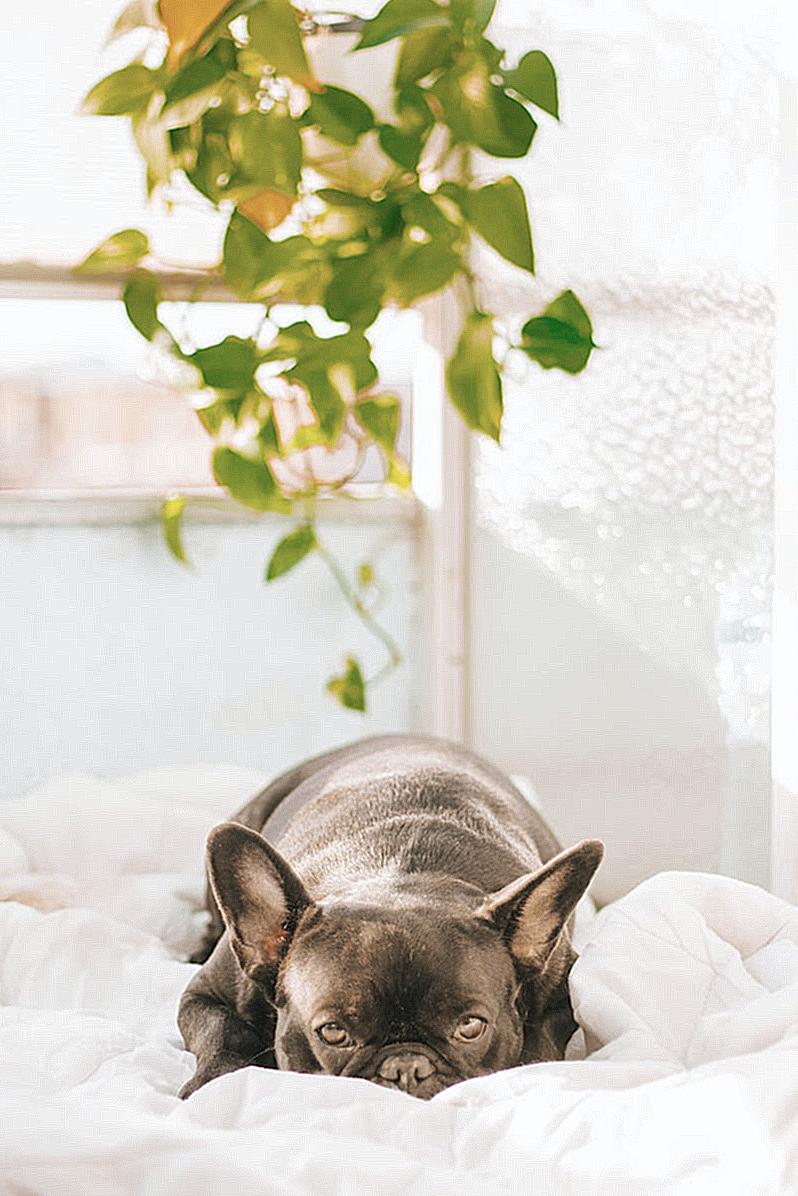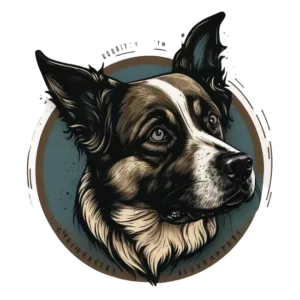
Having a high anxiety dog can be challenging and it can be difficult to find the right crate that would make your pet comfortable and keep them safe. It is important to consider different features, materials, sizes and accessories to reduce their stress and anxiety. In this blog post, we will explore different items to look for when selecting a high anxiety dog crate in order to provide a safe and secure environment that will help calm the stress and anxieties of your pet. Additionally, we’ll talk about introducing your pet to their new home, making crate time enjoyable, and properly supervising your pup while inside the crate. With the right crate, you can help create a calming atmosphere for your pup and decrease their anxieties!
What Features Should You Look For When Selecting a High Anxiety Dog Crate?
As a pet owner, finding the right kind of crate for your anxious pup can be tricky. You want to make sure that the crate you pick is safe, comfortable, and durable, so your fur babies are safe and secure. We’ve rounded up a few features to help you make sure you choose the best crate for an anxious pup.
Durability
When choosing a crate for your pup, you want to make sure it’s durable enough to withstand their chewing and scratching. Go for materials such as wire, aluminum, or stainless-steel, as these are resistant to chewing and scratching. This will effectively reduce destructive behaviors and give you peace of mind knowing your pup is safe.
Comfort
To ensure your pup is comfortable in their crate, it’s important to purchase one that fits their size and shape. Make sure they can move around freely, turn around, sit down, and stand up. Finding a crate that is the right size and shape can help reduce their anxiety and ensure your pup is happy and comfortable.
Compartmentalization
Look for a two-door crate which makes it easier for them to access all areas of their crate, providing them with a sense of security. This helps your pup feel enclosed while still having enough space to move around.
Air Flow
Air flow and ventilation are paramount when you’re choosing a high anxiety crate for your pet. Look for fabric or mesh-covered openings which allow for plenty of fresh air to pass through, but provide them with enough privacy too. This will help them feel calmer and keep them safe from overheating.
Additional Features
Look for extra features that can make your pup’s crate experince even more comfortable. For instance, removable trays, washable pads, chew-resistant protective plastic corners, and water dishes. These can help add an extra feeling of safety and convenience to your pup’s crate.
When it comes to selecting a high anxiety crate for your pup, make sure all the features suit your pup’s needs. With the right kind of crate, your pup will feel safe and secure, it will help them better cope with their environment, reducing their anxiety and giving you peace of mind.

Material Considerations
When it comes to high anxiety dog crates, material is key. It’s important to understand the pros and cons of each material to make sure your pup is comfortable and feeling secure. When considering what material will work best for your pup’s anxiety, let’s look at some of the most popular options; metal, plastic and wood.
Metal
Metal dog crates offer durability and a more secure feeling for anxious pups. Many metal crates also come with additional features, such as a removable tray along the bottom and a lockable top – offering further security for adventurous pups. On the downside, metal dog crates can be noisy and lack cushioning, making them less comfy for anxious pups who need a more calming atmosphere.
Plastic
Plastic dog crates offer more cushioning and are typically the quieter option. They are also lightweight, which makes them easier to maneuver. On the flip side, plastic dog crates may not offer as much security and can be more prone to damage than metal dog crates. Most plastic crates come with some form of locking top or bottom, but these are usually less secure than metal ones.
Wood
Wooden dog crates are ideal for creating a more elegant and calming atmosphere for pups with anxiety. Wood is generally durable and adds a touch of style and luxury to any home. The downside of wooden dog crates is that they can be quite pricey and may require more maintenance to keep them looking nice.
Wire Bars
Another popular material for high anxiety dog crates is wire bars. The advantages of wire bars are that they are generally lightweight and durable, as well as being strong and secure. The visibility also offers your pup the option to see what’s going on and remain socially involved. The one downside of wire dog crates is the lack of privacy, which can be difficult for anxious pups.
Soft-Sided Crates
Soft-sided dog crates are ideal for anxious pups if you’re planning to do a lot of traveling with your pup, as they are lightweight and highly portable. They are also great for pups who may have trouble getting used to a more secure cage-style crate. The downside to soft-sided crates is that they may not provide as much security and durability as other options.
Convertible Dog Crates
Finally, there are convertible dog crates. These are great options for anxious pups as they are versatile and can be adjusted to meet your pup’s needs as they grow and change. Convertible dog crates are easy to set up and use and offer the perfect combination of security and portability. Many convertible crates also come with additional features, such as a removable carrying case, waterproof cover and a stackable design.

Size Matters – Measuring for the Perfect Fit
Finding the ideal size for a high anxiety dog crate can be tricky but essential to provide your pet with the safest and most comfortable atmosphere. While there is no universal standard for crate size, there is a way to determine the ideal size for your pup based on breed and size.
Evaluating the Ideal Crate Size
It is important to take into account the current size of the dog and its expected growth rate when evaluating the ideal crate size. Crate size should not be too small and not too large. Allowing your pup plenty of room to move is important, while also ensuring that the carrier should not resemble a bed or walk space.
Appropriate Dimensions
The appropriate crate dimensions for different breeds, in fact, will vary. Consider purchasing adjustable crates for research for some breeds as a best option. When selecting a crate, measure twice to ensure accuracy and check both the door dimensions and walk-through size for easy access for your pup.
For example, the ideal size crate for a Labrador Retriever would be 36 inches long. A Chihuahua, on the other hand, would need a much smaller version. He will be much more comfortable in an 18 inch crate.
Merging Style & Functionality
When searching for the perfect size crate for a high anxiety dog, it is important to consider both style and functionality. If a suitable size and design cannot be found, you may need to look at combining two smaller crates online to make a larger enclosure.
Set Up For Success
Ensure your pet is comfortable in the crate by using a soft blanket and providing toys, treats and positive reinforcement. Introduce the crate over several days as part of your pup’s training routine and build positive experiences associated with the crate.
In conclusion, finding the right size crate for your high anxiety dog is an important part of creating a safe haven and sense of security for your furry friend. Carefully consider the size of your pup and introduce the crate over several days to build your pet’s confidence and comfort. Always have plenty of room to move and monitor your pet’s growth rate to ensure you have the correct size requirements.

Adding Comfort with Accessories
Making sure your pup feels secure, calm and cozy in their crate is important for reducing anxiety levels. Accessories like beds, blankets, toys, and food/water bowls can help your pup adjust to their crate and make the experience more enjoyable.
Dog Beds
Dogs need a secure, soft and comfortable surface to rest on – especially if they’ll be cooped up in a crate for any length of time. Dog beds come in various styles, colors and sizes to fit any crate size and décor. Orthopedic beds are perfect for older dogs, helping to cushion their bodies and provide support for their joints. Raised beds also help keep your pup cool during hot times of day. Other beds, such as chew-proof models, are great if your pup has destructive tendencies when left alone.
Blankets & Coverings
Covering your pup’s crate with a soft, quilted blanket or fleece covering helps make the environment quieter and more secure from outside noise. Even better, some materials are waterproof and trap in warmth during cold months. Specialty covers are also available to make the crate more private and give your pup a sense of security.
Chew Toys & Stress Balls
Chew toys and stress balls help your pup maintain a sense of calm and ward off boredom. By providing an outlet for aggressive behavior, these toys also help prevent bad habits and can even help to reduce anxiety. Swapping out these toys for new ones every once in a while will keep your pup engaged and entertained when they’re stuck in a crate.
Outdoor Toys
For those who have a pup that will be outdoors while crated, it’s important to provide various toys that are both safe and rugged. Kongs filled with delicious treats, rope toys, tug-of-war toys, and large chewable bones are all great ideas to keep your pup interested and distracted from things that may cause them stress or anxiety.
Food & Water
Having food and water bowls easily-accessible and spill-proof inside your pup’s crate is key to making them more comfortable during longer periods of confinement. Selecting the proper size and style of bowl is important, and you’ll want to check your pup’s water bowl often to ensure that it stays fresh and full. It’s also important to maintain a regular mealtime schedule when confining them, otherwise your pup’s anxiety could rise from not knowing when their next meal will come.

Providing a Safe Environment for Calming Fears and Stressors
As a responsible pet parent, we have the important job of providing our dog with a secure and comfortable environment, especially if our pup is prone to having a high level of anxiety. A high anxiety dog crate is an important tool for calming fears and addressing stressors, helping our pup enter a safe and secure den-like environment which feels comforting and natural.
Structure
The most important part of having a high anxiety dog crate is ensuring the crate is secure, durable, and tailored to the size and personality of the dog. It should be large enough for the pup to stand, turn around and lie down comfortably, with built-in protection that enables the dog to sleep peacefully and securely at night. The frame must be made of a strong and durable material which won’t break easily and which the dog cannot chew or scratch through. In addition, having an adjustable security feature like a deadbolt door lock gives extra protection, minimizing the risk of an anxious pup escaping while free-roaming.
Ventilation
A serious consideration when choosing a secure high anxiety caling crate is proper ventilation. This is essential not just to keep the pup cool and comfortable but also to maintain good air circulation and reduce stress. The crate should have large or multiple air holes or even a mesh or solid screen for optimal air ventilation which helps to avoid damp, stuffiness, and smells in the crate.
Placement
Another important consideration for anxiety-prone dogs is to make sure the dog’s crate is placed in a secure and comforting location in the home. Placing the crate near to where the family spends most of its time can provide a sense of security and inclusion. However, crate placement can vary depending on the personality of the pup. For some anxious dogs, placing the crate in a quieter area of the house or away from direct sunlight creating an oasis of calm can help reduce stress. On the other hand, for more extroverted dogs, putting the crate in a central area of the house near a window can provide entertaining views.
Environment
Once the crate is placed in the best possible location in the home, it’s time to create a calming environment for the pup. This can include day-to-day activities such as feeding and relieving, as well as providing the pup with a comfortable bed, calming music, and toys that can help to create a secure setting for the pup to relax. As pet owners, it’s important to ensure the pup’s environment is nurturing, comfortable and enjoyable.
Examples
There are numerous examples of pet owners who have used high anxiety dog crates to great success in helping their pups overcome their fears and stressors. One pet owner was able to successfully use special calming techniques, such as providing calming music and creating a safe environment and reducing noise levels, to ease their pup’s high levels of anxiety. Another example is a story of how a pup was able to move around freely in their crate, with the sense of security and reliability of their crate reducing stress.
Using a secure, comfortable high anxiety dog crate can be beneficial to any nervous pup. Focusing on providing a safe, structured, and comfortable environment around the crate, including calming music, toys, and variable placement, can help provide an area that is calming, peaceful and enjoyable for our pup.

Introducing Your Pet to Their New Home
Many pet owners ask what is the best and most effective way to introduce a high anxiety dog to their crate. While every pet has different needs, there are some basic steps that pet owners can follow to make the process smoother and easier for their canine companion.
Identifying Their Crate Size
The first step in introducing a high anxiety dog to their crate is to identify the right size for them. The crate should be just big enough for your pet to be able to stand up, turn around, and lay down comfortably. When deciding on the size, keep in mind the age and weight of your pooch. A small puppy will require a smaller crate than an adult dog, while a bigger dog may need a larger crate to ensure they are comfortable.
Purchasing Items for Their Crate
Once the right size crate has been chosen, it is time to purchase items to make their new home comfortable. Offer items for comfort such as a soft blanket or favorite toy. Additionally, it is a good idea to give treats when your pet is in their crate. This will create positive associations and will help to ease any tension your pet might have with their crate.
Establishing Regular Crate Use
Once the proper items have been purchased and you are ready to begin introducing your pet to their new home, start with short periods of being in their crate. Gradually increase the length of time spent in the crate, depending on your pet’s comfort level. If your pet remains calm and relaxed in their crate, the process should be fairly low-stress. It is important to create positive associations with the crate. Give your pet treats and verbal praise while they are in their crate in order to reinforce good behavior.
Examining The Surroundings
The position of the crate is just as important as the items inside of it. Make sure the crate is in a quiet area away from high traffic areas. Providing a bit of privacy and closing off the view of potential distractions may also be beneficial. This can help to reduce the stress and anxiety your high anxiety dog may feel while they are inside of their crate.
Making Sure It Is Secure
It is also important to make sure the crate door is securely shut, and the latches are properly closed. An unsecured door could lead to your pet escaping, so it is crucial to check that the door is shut firmly. For smaller dogs, placing a small pup tent or pillow on the bottom of the crate may help to keep them comfortable and secure.
Seeking Help If Needed
Introducing a high anxiety dog to their crate can be stressful for both the pet and pet owner. Utilizing positive reinforcement and being patient is key when introducing your pet to their new home. However, if things become too overwhelming, it is a good idea to contact a professional trainer or behaviorist for guidance.
By following these steps, you will be able to help your pet adjust to their new home more easily, and create a safe and comfortable space for them to relax and sleep in.

Making Crate Time Fun
Crate time can be tricky for high-anxiety dogs. When the environment is uncomfortable or unappealing, they may experience high levels of stress or even act out. Fortunately, there are several ways to make crate time more enjoyable for your pup and help them feel comfortable and secure.
Benefits of a pleasant crate environment
Creating a relaxed, pleasant environment for you pup is key to reducing their anxiety around the crate and helping them associate it with positive experiences. A proper crate environment can help alleviate boredom, reduce stress levels, encourage exploration, and create trust between you and your pup.
A Playful Crate
Making the crate an inviting and playful space for your pup will help them establish a positive association with their crate. This can be done by adding a cozy bed, toys, and treats to the crate. Even if your pup doesn’t seem interested in the toys or treats, know that the presence of the items creates positive associations in the long run, even if they aren’t used right away.
Encouraging Exploration and Interaction
To create a positive environment and help your pup learn to love the crate, you can also teach them basic commands, such as “sit” and “stay”. You can also reward them with treats when they enter the crate or create interaction with their toys. This helps build positive associations with their crate and encourages exploration.
Examples of Successful Crate Training
Crate training can be extremely successful with high-anxiety dogs, and here are a few stories to demonstrate this. One pup was unable to stay in the crate for more than a few minutes without barking or howling. Through an obedience class, the pup learned to understand basic commands and gained the ability to stay in the crate for longer periods of time without barking. Another pup was able to learn to enter the crate voluntarily and eventually slept in the crate at night. Through the steps taken, these pups were able to become more comfortable with the crate and reduce their anxiety levels.
By using these methods to make crate time enjoyable for your high-anxiety pup, not only will their stress levels decrease but also their positive crate associations will increase. If you’re looking for successful crate training with your pup, gradually introducing these steps can make all the difference in their experience.

Properly Supervising Your Pet While In the Crate
Pets with high anxiety need special attention to help them feel more comfortable in their crate. Supervising them while they’re in there is an important part of providing them with a safe and calming space.
Whether you’re keeping your pet in the crate for short periods of time or for extended periods, here are some tips for properly supervising them:
Talk to your Pet
Speaking to your pet in a calm and soothing voice can help them feel more comfortable and relaxed. Using positive words and speaking gently can help keep them calm and happy.
Spend Time With Them
Spend at least 15 minutes a day playing and interacting with your pet to let them know that you’re there for them. This will help them bond with you better, which can help them feel more content in their crate.
Monitor their Activity
Monitoring your pet’s activity can help you take the necessary steps to address any inappropriate behaviors they may develop while in the crate. For example, if they bark or whimper excessively, give them some reassurance and try to redirect their energy.
Provide Reassurance
Providing your pet with comforting items like a blanket, toys, or even a favorite treat can help them feel safe and secure. These items also help provide a sense of security and familiarity, which can help in times of stress.
Use Positive Reinforcement
Rewarding your pet for good behavior is key to successfully crate training. Give them treats when they’re calm and quiet in the crate, or praise them for staying in the correct position or for not destroying the crate. This will reinforce the idea that staying in the crate is a positive behavior and help keep them from destructive behavior.
Be Patient
It’s important to remember that crate training takes time and that not all pets respond in the same way. Make sure to stay patient and consistent with your approach to crate training. With enough practice and care, your high anxiety pet will eventually settle into a healthy and calming routine.

Conclusion
Selecting the right high anxiety dog crate is vital when it comes to helping your pet feel safe, comfortable, and secure in their new home. Whether you’re searching for a crate made of wire, soft-sided fabric, or something in between, making sure it is properly sized, well constructed, and outfitted with cozy, stress reducing accessories will encourage positive crate use. With a combination of ample exercise and proper exposure, your dog can be comfortably and safely trained to enjoy their crate. All in all, providing this new space to your pet with clear expectations and rewards can help them be happy and relaxed, even in an anxiety provoking environment.



